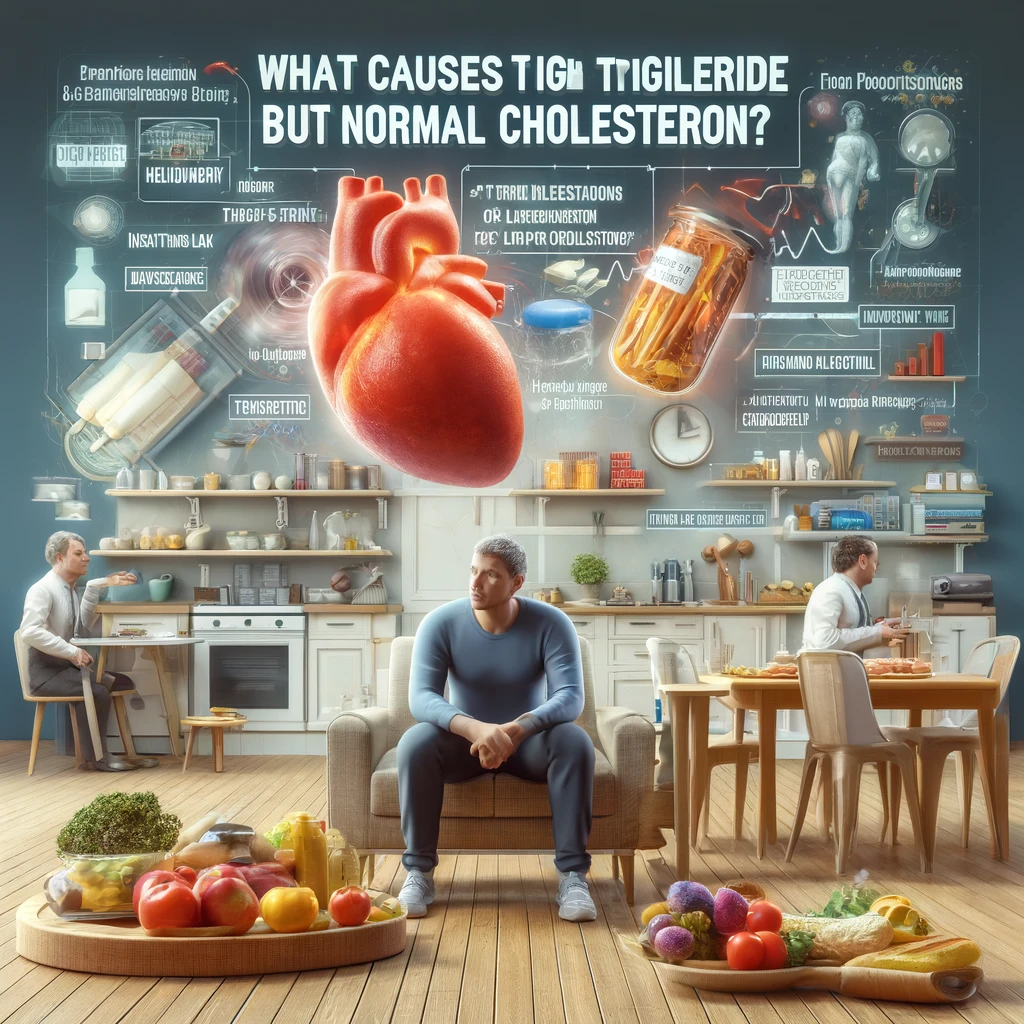What causes high triglycerides but normal cholesterol?
-
Blog
-
Add to favorites
-
Join our community in exploring insightful stories, tips, and experiences that inspire and inform. The iMedix Blog is your go-to destination for connecting with others and enriching your health knowledge.
-
Questions:372
-

Triglycerides, a type of fat found in the blood, serve as the body's primary energy source and are the most common type of fat in the body. They enter the bloodstream either from absorbed dietary fats or as a result of synthesis in the liver from carbohydrates or the release of subcutaneous fat when glucose is depleted.
Deriving their name from their unique structure, triglycerides consist of three fatty acids combined with glycerin triatomic alcohol. Their main function is to provide energy, with 1 gram of triglycerides yielding 9 calories, twice the energy capacity of carbohydrates and proteins. Triglycerides create stationary depots in adipose tissue and mobile depots in vessels.
The external source of triglycerides is food, which is broken down in the intestine with the help of lipases into glyceride and fatty acids. These are then synthesized in the mucosa, transferred to the lymph, and picked up by chylomicrons, which transport them to the liver. The internal source of triglycerides is the liver, adipose tissue, and intestines, where they are synthesized from carbohydrates and transported to tissues by very low-density lipoproteins (VLDL).
As triglycerides do not dissolve in water, they are transported along the bloodstream by VLDL and chylomicrons. The majority of triglycerides are concentrated in fatty tissues, while the rest circulate in the bloodstream, providing energy to muscles.
Factors contributing to high triglyceride levels include obesity, uncompensated diabetes, hypothyroidism, renal disorders, consuming more calories than burned, excessive alcohol consumption, and certain types of high cholesterol and triglyceride levels caused by hereditary factors.
Cholesterol levels depend on age, sex, endocrine profile, and overall health. The optimal level of total cholesterol is below 5 mmol/L, with a maximum permissible level of up to 6 mmol/L. For high-risk individuals with heart disease and blood vessel conditions, the optimal level of low-density lipoprotein (LDL) is below 1.8 mmol/L, while those without a predisposition to cardiovascular diseases should maintain levels between 2.6 and 3.3 mmol/L. The maximum allowable level of LDL is up to 4.1 mmol/L, with higher figures indicating pathology development.
High-density lipoprotein (HDL), or “good” cholesterol, should ideally exceed 1.6 mmol/L. For women, the norm is 1.3-1.5 mmol/L, and for men, it is 1.0-1.3 mmol/L. Lower levels of HDL are unfavorable.
In conclusion, understanding the roles and optimal levels of triglycerides and cholesterol is essential for maintaining overall health and preventing cardiovascular diseases. Consult with a healthcare provider for personalized advice and guidance.
-
Cholesterol
-
Add to favorites
-
Cholesterol is an organic lipoid compound, which is a part of all tissues of the body. It forms cell membranes and supports the skeleton of our body.
-
Questions:
-
-
General Health
-
Add to favorites
-
The level of the general health is determined depending by the presence and severity of the vital body functions decompensation. In accordance with this, the doctor takes a decision on urgency and necessity of therapeutic measures.
-
Questions:
-
-
Nutrition
-
Add to favorites
-
Questions:
-
Please login or register to post a comment